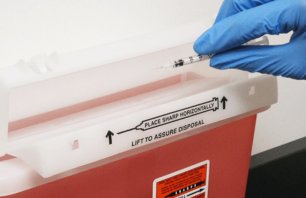Healthcare providers and administrators understand that a safe care environment is part of the groundwork for healthier communities. A crucial yet sometimes overlooked aspect of improving healthcare environments is proper medical waste management, which includes the segregation of medical waste from other waste types into designated containers designed for medical waste storage, collection, and transportation. Proper medical waste segregation can benefit healthcare organizations and the communities they serve in multiple ways.
Maintain Regulatory Compliance
Applicable law often requires medical waste segregation. Therefore, a medical waste segregation program can help healthcare organizations avoid enforcement or other legal action. Waste segregation can be challenging, but partnering with a knowledgeable waste management provider can help establish an appropriate process.
Healthcare organizations should refer to state and local regulations applicable to their facility when developing a waste segregation program.
Reduce Waste Management Costs
Proper waste segregation can benefit healthcare organizations by enabling them to understand the volumes of each type of produced waste. Segregating and tracking waste types can help an organization reduce waste disposal costs. Of all the waste generated by healthcare organizations, 85% is general municipal waste, which is typically subject to minimal regulation. Organizations should segregate the relatively small percentage of regulated wastes that requires special handling or treatment, which will help prevent overpaying for either solid waste or regulated waste services.
Help Mitigate Environmental Impacts
Improper waste segregation can also result in harmful environmental impacts. For example, disposing of pharmaceutical waste down a drain, rather than segregating it for incineration, can result in active pharmaceutical ingredients in surface or drinking waters, which can cause harm to humans, animals, or plant life. To help mitigate these and other impacts, healthcare organizations should ensure that the various waste streams they produce are identified and appropriately managed.
Help Improve Safety
Safety in medical waste segregation and disposal is essential for front-line workers providing healthcare services. Waste segregation can help reduce the risk of injury or exposure. For example, a used sharp (such as a needle or syringe) disposed of in a regular trash can could lead to a needlestick injury. Utilizing a closable, puncture-resistant, and appropriately labeled sharps container to dispose of used needles helps mitigate that risk of exposure.
Healthcare organizations can help avoid endangering workers by maintaining a robust medical waste segregation program. Furthermore, proper medical waste management can benefit patients and non-provider employees (such as Environmental Services staff). Employers should train employees on the Occupational Safety and Health Administration’s Bloodborne Pathogens Standard, including job-related risks and how to prevent workplace exposures.
Improved safety in the work environment can help improve employee satisfaction, which could result in higher levels of worker retention. Healthcare workplace burnout is a genuine issue, and better medical waste management can be one way to combat this and help reduce some of the stress healthcare workers face.
To better protect individual safety, ensure that your staff dispose of all medical waste in designated bags or containers.
The Waste Segregation Process
Medical waste segregation can be best explained by the color and type of waste container:
Red Bags and Sharps Containers:
Red bags are for non-sharp medical waste, including blood-saturated gauze or bandages or other potentially infectious materials (OPIM). Red sharps containers are for used needles, blades, or other sharp tools that are potentially contaminated with blood and OPIM.
Disposal in appropriate bags or containers will help protect those in healthcare environments from exposure to bloodborne pathogens and sharps-related injuries. Improper disposal, such as placing sharps, electronic waste, or hazardous chemicals in a red bag, can harm waste management workers or equipment. It can also result in non-compliance. Employees should therefore understand what to dispose of and where.
Yellow Containers:
Yellow containers or bags are for the disposal of trace chemotherapy drugs. This refers to waste contaminated through contact with, or have previously contained, chemotherapeutic agents.
Blue Lid Bins and Blue Lid Containers:
Blue lid bins and containers are for the disposal of non-hazardous waste pharmaceuticals. Although not required, the U.S. Environmental Protection Agency recommends that such waste be segregated for incineration rather than flushed down the drain or disposed of in the regular trash.
Black Containers:
Black containers are for hazardous wastes, including hazardous waste pharmaceuticals. Waste disposed of in black containers will be either a listed waste or have a hazardous waste characteristic (ignitable, corrosive, reactive, or toxic).
Stericycle offers resources to help staff learn how to segregate waste streams. Learn more here.



